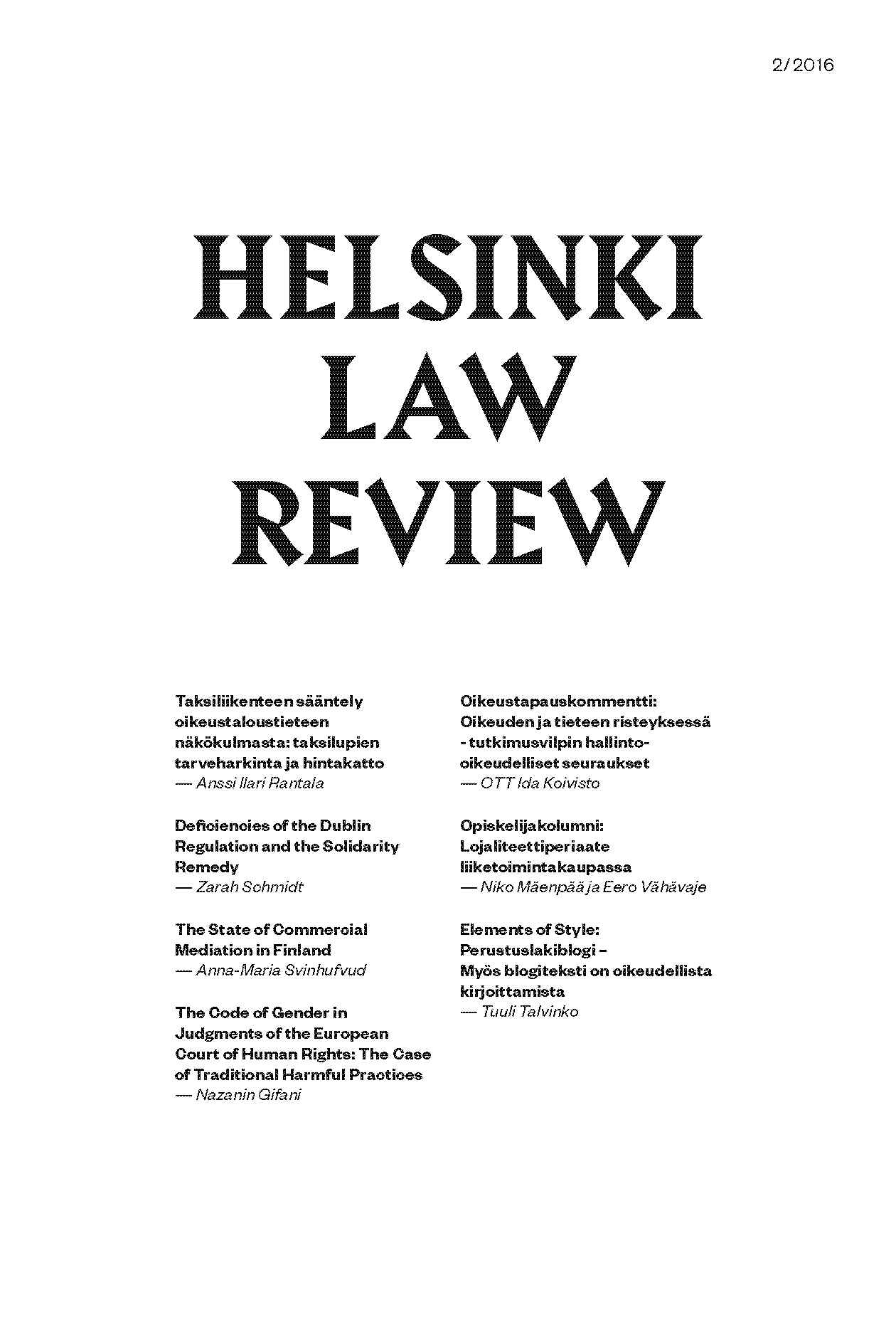The Code of Gender in Judgments of the European Court of Human Rights: The case of traditional harmful practices
Avainsanat:
gender stereotyping, non-refoulement, harmful traditional practices, European Court of Human RightsAbstrakti
The European Court of Human Rights (the ECtHR) is not a court of asylum, however the Court does accept the application of the principle of non-refoulement. Accordingly, expulsion of asylum seekers can engage the responsibility of State parties if there are substantial grounds for believing that the asylum seeker may face treatment contrary to the standards of Article 3 upon return. In some cases the ECtHR has found an opportunity to make an assessment of the risk of being exposed to the harmful traditional practices upon expulsion or deportation. This paper seeks to examine the use of gender stereotypes in these judgements. The paper focuses, through feminist analysis, on the evaluation of the Court of the real risk of finding out whether or not the reasoning of the Court is based on a gender biased evaluation of the claim. Therefore, it explores the way the Court gives weight to different factors in the final determination of the case and concludes that the ECtHR‘s reasoning is based on gender-stereotyping and relies on the traditional notions of gender norms which then reproduce patriarchal and suppressive gender norms and reinforce gender inequalities.


